Part I: Background Info on the Pelagic Cormorant
As our boat motored through the swirling turbulent waters of Nakwakto Rapids I looked at the bare cliff faces of Tremble Island located in the middle of the passage. As we approached the rock, gangly black birds with long necks began throwing themselves from the steep walls. As we watched them fly away questions began to form. What were they and why were they here?
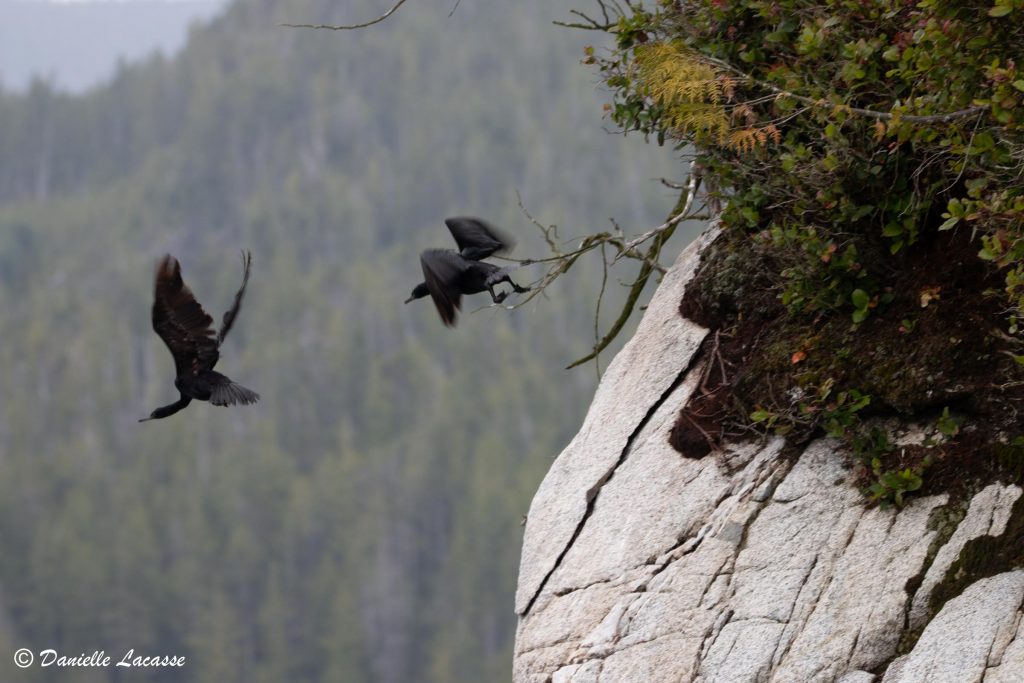
Description & Identification
Cormorants are fish eating birds that are found in coastal areas. Cormorants have four webbed toes and are in the Order Suliformes formerly Pelecaniformes. The taxonomy has been reclassified due to genetic and behavioural characteristics (Kennedy 2001). Despite the fact that cormorants are diving birds, their feathers are not water repellent (this may help with buoyancy control). They can often be seen along the shore with their wings spread out to dry. Three different cormorant species call British Columbia home; the Double-crested, Brandt’s and the Pelagic. Interestingly, all three species forage near each other but prefer different substrates. Pelagic Cormorants fish in rocky areas for invertebrates and fish while Brandt’s forage in the water column and Double-crested head for flat sandy bottoms.
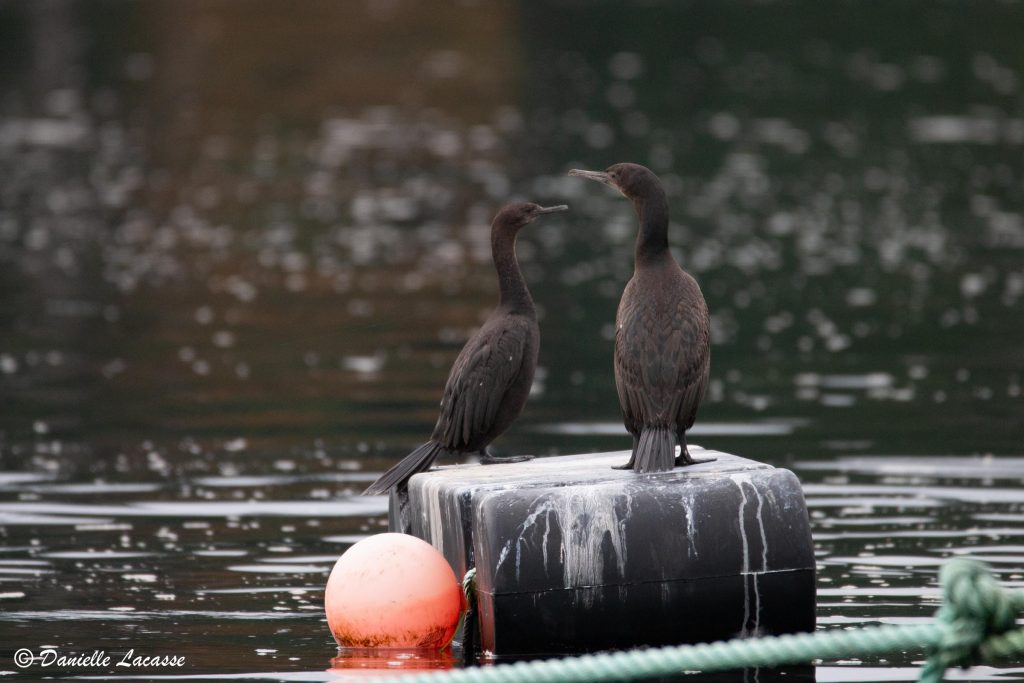
Pelagic and Brandt’s Cormorant side by side 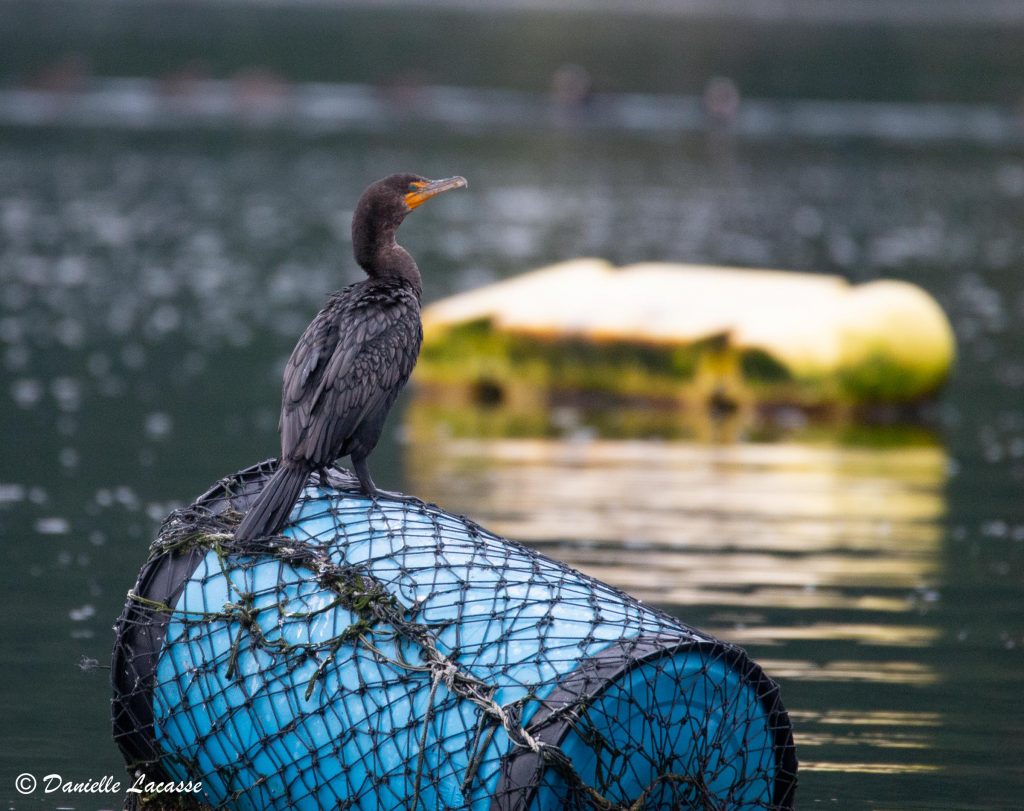
Double-crested Cormorant
This slender coastal bird is described as having a thin neck and bill. The Pelagic Cormorant is the smallest of the three found in North America. In it’s non breeding plumage, it is all black. Breeding adults can be found sporting a shiny greenish shimmer on the upper wing with a white patch near their legs and a redder face. When seen in flight, this bird’s long neck is straight out (The Cornell Lab of Ornithology).
The pelagic cormorant will probably not be winning any awards for its song. In fact, it is usually silent, what vocalizations it does make have been described as low grunts, pained groaning and hissing. Have a listen!
Distribution
These birds are not migratory and spend most of their time in inshore waters around BC’s coast and in particular, in areas with steep rocky cliff walls. Globally, they are widely distributed from Baja California to the Chukchi Sea and across to Southern China (Atlas of the Breeding Birds of British Columbia).
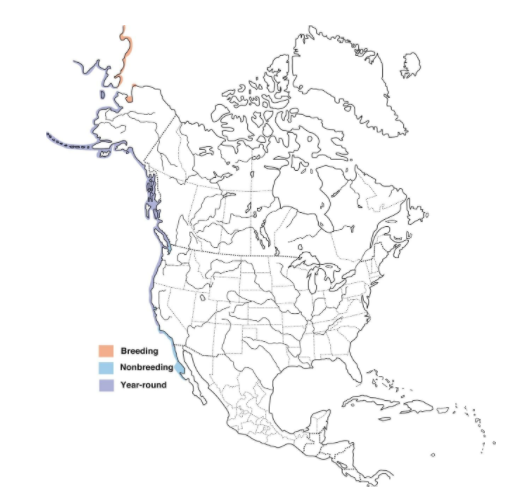
Habitat & Nesting Locations
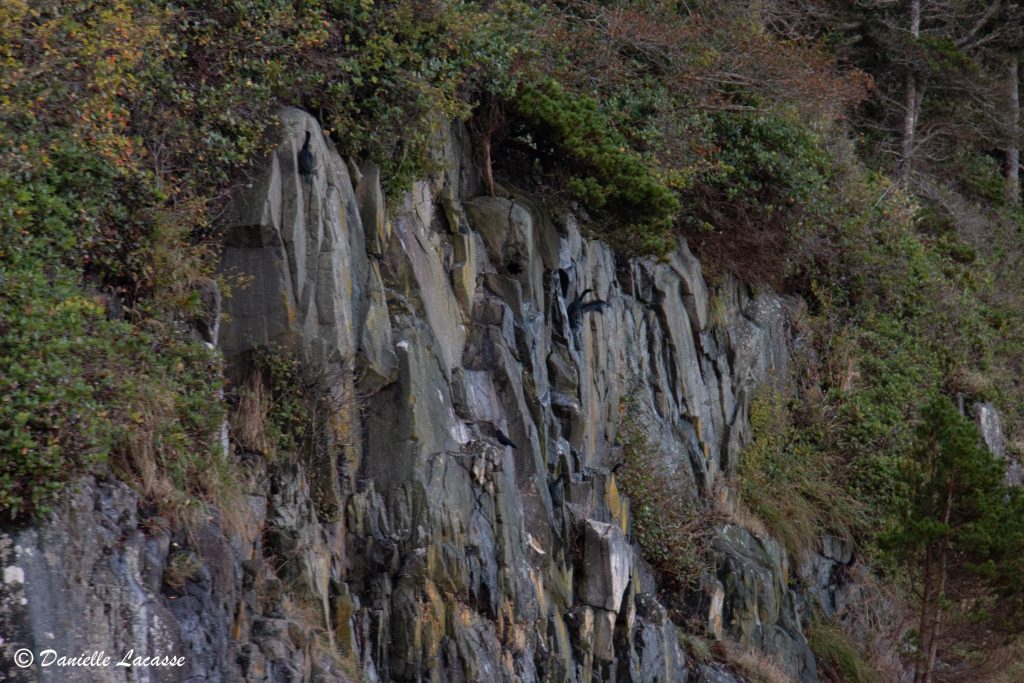
Nests are often made on coastal cliff walls. They can be hidden in crevasses or large caves. This can help protect the young from predation. Eagles can be quite a problem for the cormorants. They have adapted to this predation by building their nests near the home range of Peregrine Falcons who are very territorial and will chase any interlopers. (Atlas of The Breeding Birds of British Columbia).
It is hard for researchers to survey Pelagic Cormorant nest sites and gain accurate data as colonies can be on remote islands and be very small. Breeding colonies consisting of a few to several hundred pairs have been recorded. To make population studies even harder, these cormorants don’t necessarily use the same location every year. Fun fact, Pelagic Cormorants will use their own feces, guano in bird terms, to solidify their nest to the cliff face as well as provide structural stability. Nest are also made of seaweed, grass, moss and sticks. Cormorants will lay 3-5 eggs and co parent their young. The nestlings are usually able to fly short distances at 35-40. days and leave the nest at 45-55, although it does vary. Parents will continue to care for their young for a few weeks after they initially leave the nest (Audubon 2019).
You may have noticed in the above images, that the developing young have different looking feathers on their wings. Ornithologists and researchers are able to use the plumage of a bird to determine its age. A “Hatch Year” bird (June-December) will retain more than 90% of its juvenile plumage with almost all of its juvenile flight feathers. At this age, the bird will be medium brownish with ashy or exposed flesh. In its second year (January-May), the juvenile cormorant will begin to develop variable amounts of aquamarine colouration. From May -August, the young bird’s feathers will be very worn and it will have some fresh adult flight feathers (remiges). The exposed skin will also be darker than that of a HY (Filardi 2001). The three images above were taken in August, 2020. Based on the images, how old do you think these birds are?
Conservation
These birds are of low concern. In the 1980’s, the North America population was reported to be over 120, 000 birds with about three- quarters of them located in Alaska (Audubon 2019) It is important to note that in the past 3 decades there has been a decline in breeding populations in coastal areas of Western Queen Charlotte Strait (Carter 2016) as well as Barkley Sound (Carter 2007). The reduction in numbers is attributed to human and eagle disturbance.
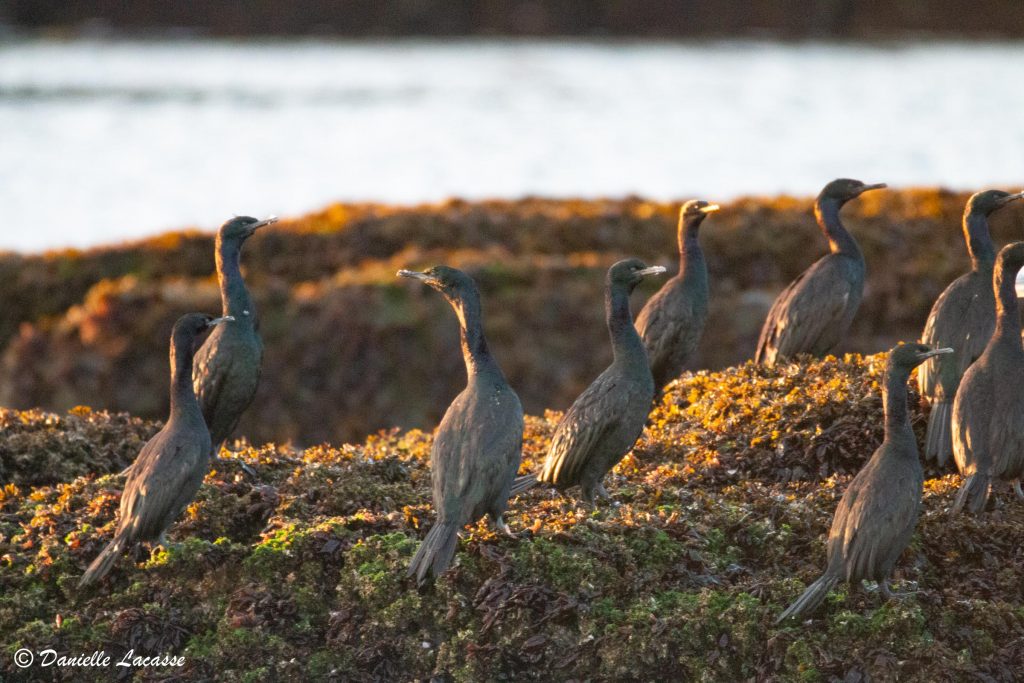
Part II: Responses to Marine Traffic and Predation.
Several surveys have shown decreasing populations of Pelagic Cormorants along the Vancouver Island coastline. It is thought that human disturbance as well as increasing eagle populations may be the cause (Clyde 2012). When disturbed during nesting season the parent birds try to protect their nests by flying away from it, or avoiding it. This leads to increased stress, thermal shock in eggs, and in extreme cases, will decrease the breeding success of individuals. If disturbed routinely, seabirds will give up on nesting and wait for another time (Stearns 1976). This is not great for population growth, especially in highly disturbed areas.
A 3 week survey was conducted in Barkley Sound during the height of breeding season to investigate these effects. The researchers observed caves/nest sites from approximately 200m away with binoculars and spotting scopes so as not to disturb the birds. Bird departure and arrival was recorded in 10-minute sample intervals. Vessel and eagle presence within 500m of the site was also recorded. It was found that two of the sites had significantly less cormorant activity when boat traffic or eagles were present (Clyde 2012). Interestingly, a similar study conducted on Double-crested Cormorants in the Strait of Georgia found that they responded to eagle presence but not boat traffic (Giesbrecht 2001).
Conclusion
The Pelagic Cormorant is a slender seabird that calls the British Columbia coastline home. Its long neck and black body are key identifiable features. This bird prefers to make its ness in quiet hard to get to places like the edge of steep cliff faces. Their global population is not of concern however, the numbers of Pelagic Cormorants along the BC coast is seeing a decline possibly due to human disturbance and increased eagle predation. I hope you enjoyed learning about the Pelagic Cormorant and it’s life on the edge.
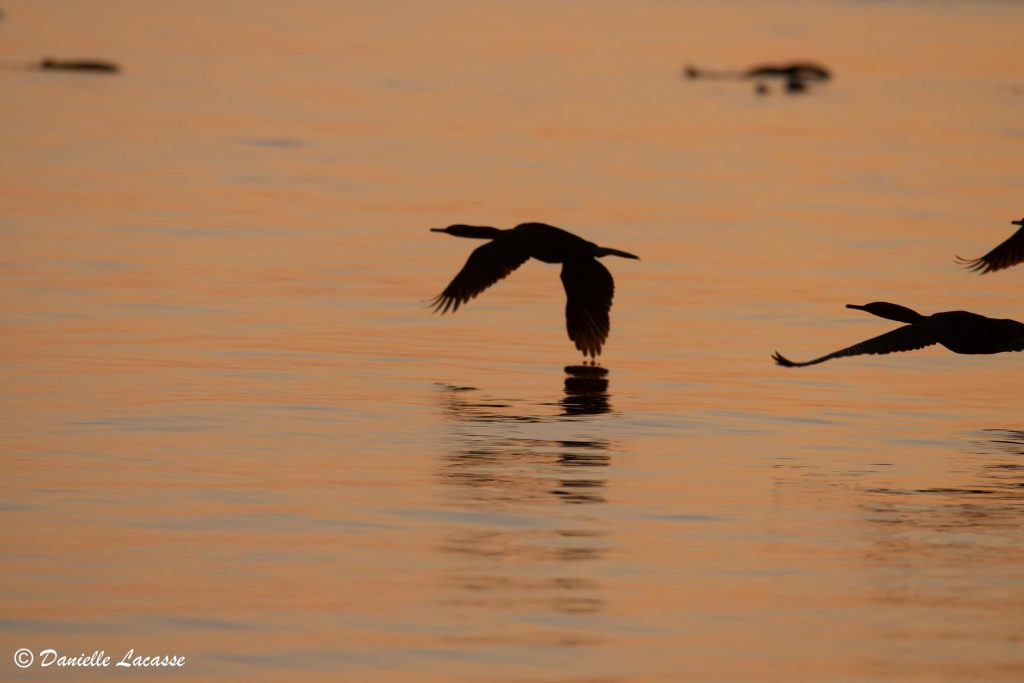
References
Atlas of The Breeding Birds of British Columbia. Pelagic Cormorant. (Internet): https://birdatlas.bc.ca
Audubon (2019) Guide to North American Birds: Pelagic Cormorant. (Internet): https://www.audubon.org/field-guide/bird/pelagic-cormorant
The Cornell Lab of Ornithology (2019) All About Birds: Pelagic Cormorant. (Internet):https://www.allaboutbirds.org/guide/Pelagic_Cormorant/overview
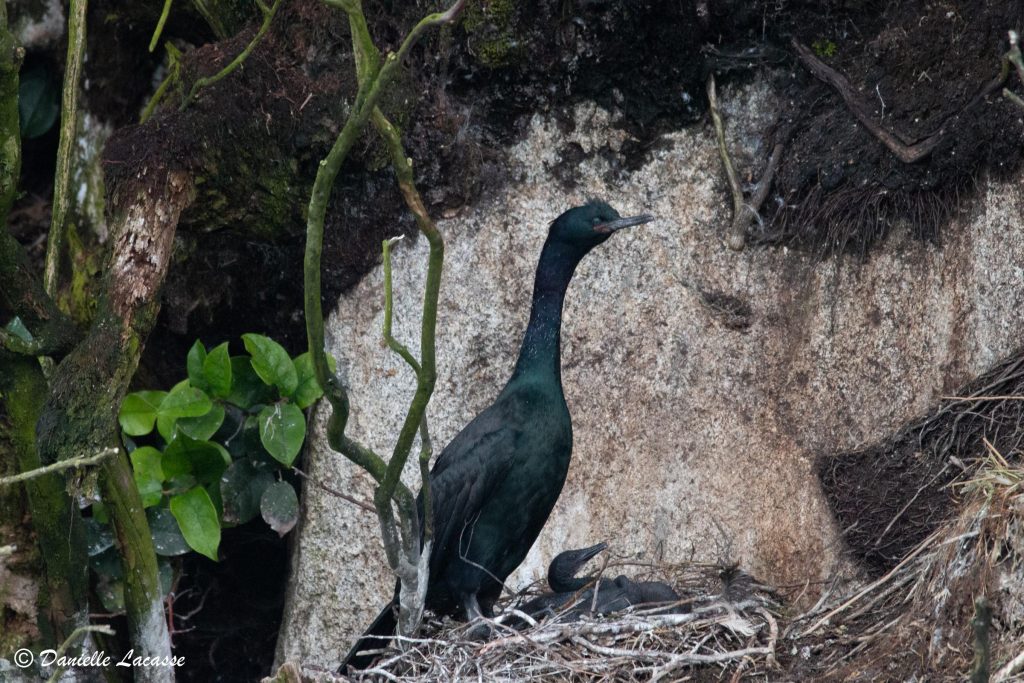
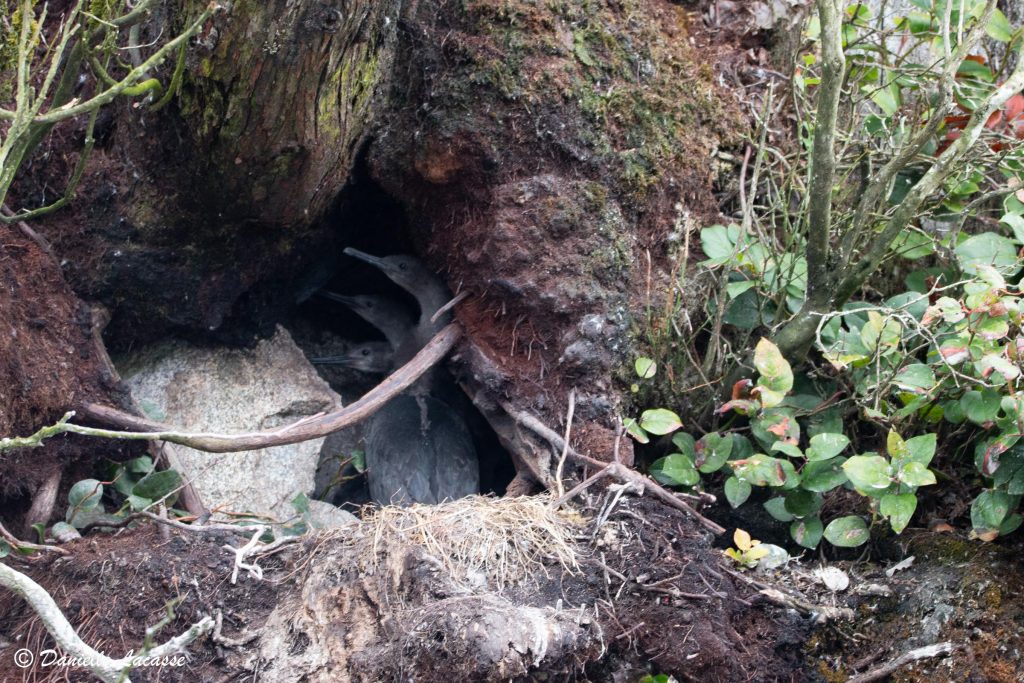
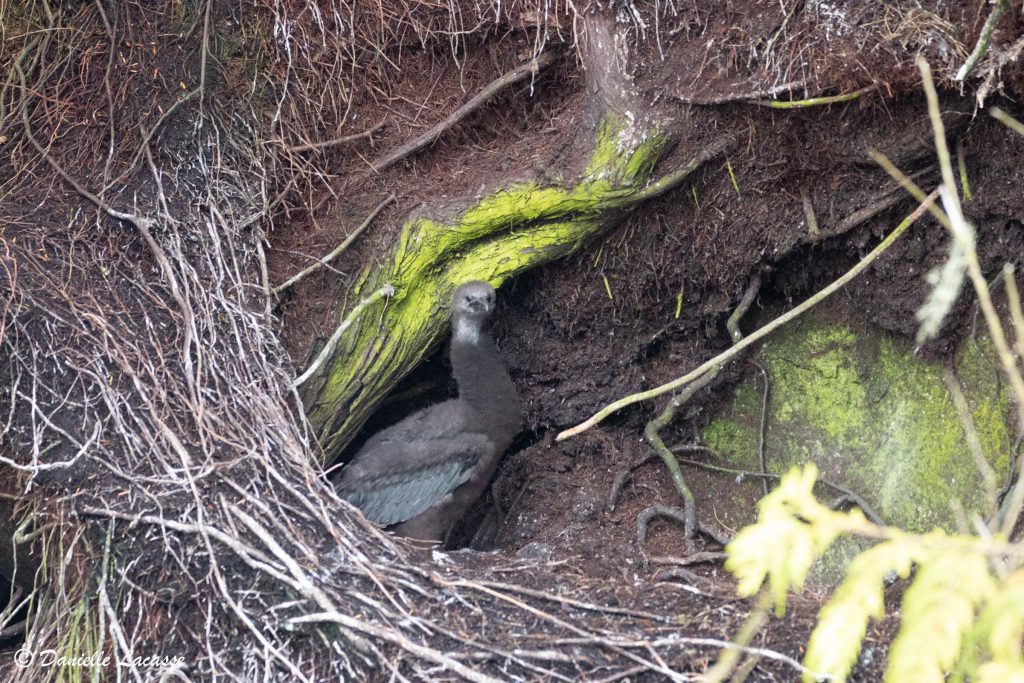
Hi Danielle,
Great blog! Your photos are of course amazing. There’s definitely something about using your own media that spices up working on an assignment. I like the video with the BAEA! I noticed that the bird is tagged, but I can’t tell if he is banded.
It’s very cool that you had the opportunity to watch the progress of a PECO nest this summer. Are you asking us how old we think the birds are in months or are you asking for the age code? If the later, I think you may have spoilt it yourself;) I would think maybe 1-2 months old for the HY birds?
Very interesting that PECO build their nest close to predators to avoid other predators… do you know if PEFA take advantage of this conveniently close prey?
Thanks for sharing your love of PECO!!
Cheers,
Sam
Hi Sam,
Thanks for the comments! I really appreciated being able to look back on my my own experiences and photography while writing this blog.
Interestingly, the images of the the young birds on Tremble Island were taken on the same day. Nakwakto Rapids (where the Island is located) is about a two hour boat ride from Port McNeill. It has incredible diving but we are usually only able to safely get in the water 2 or 3 times a year. It was intriguing that there were nests present with so many birds in different stages of feather development.
In regards to the symbiosis between PECO’s and PEFA, due to the small size of the Peregrine Falcon (about 1.0 kg) they are not able prey on the much bigger sized Pelagic Cormorant. The PEFA are very territorial however and not afraid to take on a larger bird that they see as a threat. Researchers have found that the presence of PEFA are helping protect other smaller seabirds from predation as well. I have included an interesting link discussing their relationship.
https://bioone.org/journals/waterbirds/volume-34/issue-1/063.034.0110/Peregrine-Falcons-Enable-Two-Species-of-Colonial-Seabirds-to-Breed/10.1675/063.034.0110.full
Hi Danielle,
As per usual your photos are insane, they made the blog a lot more intriguing knowing that the author also captured the beautiful moments. I learnt a great deal from reading your blog and what I found especially interesting was the fact they’ll avoid one predator by going nesting close to a seemingly just as dangerous raptor. Another fact I found interesting and was semi similar to my presentation species of the Blue-footed Boobies, but both species appear to use guano for reasons other than excreting waste. The BFBO will actually use it around their nests as a marker to ensure that those juveniles within the ring will be their own nestlings, and any bird outside the ring is not. Pretty cool eh?
I had a question about the two studies and the PECO response to boats and eagles. Why do you suppose there was a different response between the two locations?
Thanks for the awesome blog,
Eden
Good evening Eden,
Thanks, and I am glad you enjoyed the article! It is super cool that birds have found a way to make use of their waste, especially in the case of the BFBO who have such powerful scent detection. In regards to your question, the two studies were looking at two different species. The main one that I focused on was studying the effects of human disruption and eagle predation on Pelagic Cormorants while the other focused on Double-Crested Cormorants.
Hope this answered your question,
Danielle
Hi Danielle
I loved your blog! I always have a tough time IDing cormorants but the Deep Bay boating trip gave me loads of practice. Most of the time I see cormorants in big groups sitting on rocks together, and sometimes I can even pick out all three species together. Is this just because they forage in similar areas or are there other reasons to stick together like that? It is really neat that the three species prefer different substrates too.
Thanks for sharing!
Jenna
Hi Jenna,
Glad you enjoyed it 🙂 It definitely takes some practice to separate the three types from each other, especially when they are mixed together and at a distance. The three species use fairly similar roosting spots such as rocky areas or human infrastructure (like we saw at deep bay). The fact that they utilize different areas to hunt means that they are not directly competing with each other. That being said, some birds are more “shy” than others and less likely to be found in some areas. A few studies suggest that Double-crested Cormorants are not as affected by human industry and noise as Pelagic Cormorants are.
Thanks for your question
Danielle
Hi Danielle,
I loved your blog post! The pictures you captured were absolutely amazing! Your post was also very informative. I loved learning more about Pelagic Cormorants for I have come across them when on the boat. They build their nests in pretty sketchy sites, so it was interesting to learn that they use their own feces to help hold it in place. It was also very interesting to learn about how in order to escape Bald Eagle predation, they’ll form their nests near to another dangerous raptor species. Very well done!
Gabrielle